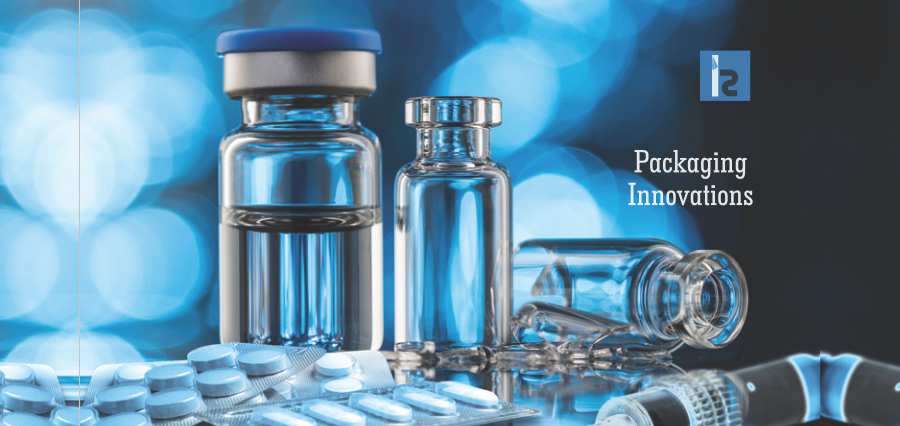Judge a book by its cover – humans judge others by their physical appearances and form the first impression about others within a few seconds of seeing people. Likewise, consumers perceive the product by its packaging. The packaging of the product helps to differentiate from the competitors and facilitate the identification of the product. In short, it plays a significant role in the promotion of the product. It is essential for every enterprise irrespective of the type of industry. But for pharmaceutical industry packaging of the final product has some significance as it protects from physical, chemical and biological damage. Packaging and labelling provides useful detail about drugs to the customer.
For Pharma products, the packaging material is selected very carefully. There is an approved list of specific packaging material that to be used for packing and labelling. The packaging of pharmaceutical should be done in a manner that it doesn’t get exposed to any gases like oxygen, or nitrogen. With the technological changes, the new innovation in pharmaceutical packing has arisen which uses the new generation of materials.
Airless Tubes
Tubes are easier to use and that is why most of the consumers and patients prefer the tubes. When it comes to pharmaceutical products, it should be ensured that no air enters the tube, as air and moisture can affect and change the composition of the formulation. Airless tubes are specifically designed for Pharma products like cream and paste so that air does not easily enter the tube. Such tubes are cost effective and consume less plastic than other forms of tubes. It is environmental friendly and easy to use.
Pre-filled Syringes
Pre-filled syringes have arisen as one of the fastest-growing choices for unit dose medication as the pharmaceutical industry seeks new and more convenient drug delivery methods. It makes injections easier and safer for both the doctors and patients. Patients always receive the right dosage with a pre-filled syringe. In the near future, the pharmaceutical and biotech industries will ask for pre-fillable drug delivery systems for valuable potent drugs. Moreover, the global prefilled market is estimated to be approximately one billion units. The application of prefilled syringes technology in the industry has increased.
Smartphone Technology
There is a rise of self-verification that enables patients to confirm their own medicine via a smartphone and help them to identify false drugs. Such smart packaging contains coding by which buyer can see product content in addition to a drug label and printed packaging via smart phone. This would expand the patient compliance as well as establishes the authenticity of the product.
Child-Resistant Packaging (CRP)
C-R packaging is a special type of packaging used to decrease the risk of children ingesting dangerous items. The CRP bottles use a special safety cap with locking mechanism that can be opened only by adults. In many countries, it has been made obligatory to pack drugs like Aspirin, Paracetamol, Elemental iron, Contraceptives and other drugs to be packed in CRP.
Unit-Dose Packaging
Unit-dose packaging (UDP) is used in hospitals, nursing homes, etc. It is a packaging of a single dose in an especially non-reusable container. Drugs in unit-dose packaging are easily identifiable and can be returned to the pharmacy if the medication is discontinued. Although UDP costs more to manufacture than bottles but contributes to better patient health and safety.
Two-in-one Prefilled Vials
Two-in-one prefilled vial comprises of top and bottom chambers made of polypropylene, an insulating spacer, a stopper, and tin cap. It is a multi-chamber dispenser, which provides a closure solution for filling. It enables consumers to easily determine the authenticity of product. With the use of this technology, there will be less chance of contamination, and it provides a cost-effective solution versus traditional glass vials.
Tamper Evident Packaging Systems
The modern packaging involves tamper evident for over the counter drugs and some cosmetics. Some drugs and packages are innately tamper proof, like, an aseptically packed multilayer carton or a vacuum or the retort pack. The tamper evident packaging systems are:
Film wrappers
A transparent film is wrapped securely around a product or product container. The film must be torn to open the container and remove the product. It is categorized into end fold wrappers, fin seal wrapper, and shrinks seal wrappers.
Shrink seals and bands
It involves the packaging of product in a thermoplastic film, bands or wrappers with a distinctive design are shrunk by heat or drying to seal the cap and container union. The main advantage of this wrapper is the flexibility and low cost of packaging.
Breakable caps
These caps break when an attempt is made to open it. It comes in various designs that provide external tamper evidence and can also be combined with the internal seals thereby providing double security.
Sealed tubes
Collapsible tubes used for packaging where the mouth of the tube is sealed and the seal must be punctured to obtain the product.
The trends in pharmaceutical packaging are on the verge of innovative rapid growth. The speedy changes in research and manufacturing technologies have driven major developments in packaging and delivery systems of Pharma products. In the era of high competition, it would be a great challenge for the packaging industry to meet the demand of the market.


